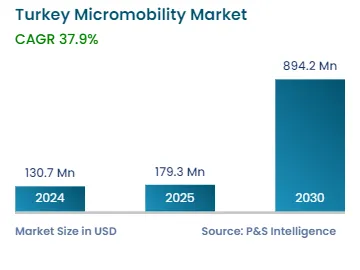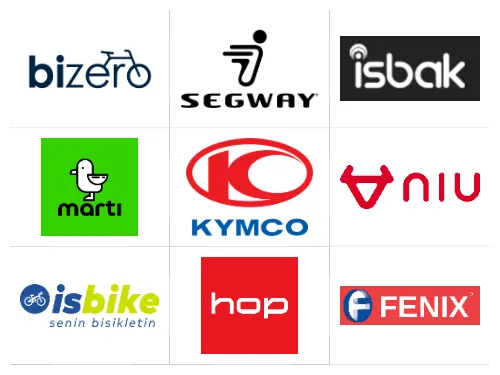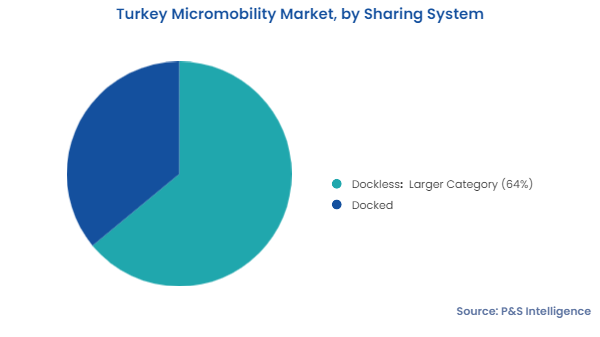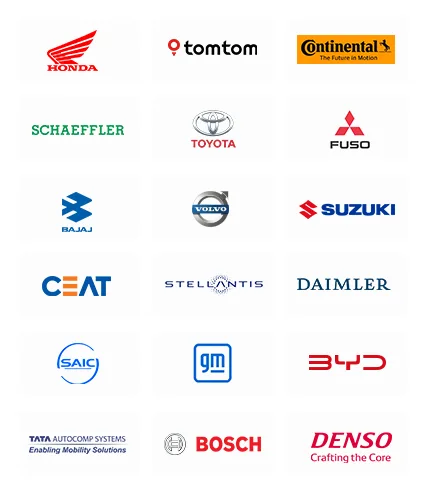Turkey Micromobility Market Future Prospects
The Turkish micromobility market value is estimated at USD 130.7 million in 2024, and it is expected to grow at a CAGR of 37.9% during the forecasted period (2025–2030), reaching USD 894.2 million by 2030.
The major factors driving the growth of the market include the requirement of maintaining green environment, pursuit of efficient transportation system for short distances, and need for reducing traffic congestion.
Istanbul continues to grapple with significant traffic congestion, a factor that strongly favors micromobility solutions. According to the TomTom Traffic Index 2022, Istanbul ranked as the 5th most congested city globally out of 389 cities analyzed. Drivers in Istanbul lost an average of 142 hours (equivalent to 5 days and 22 hours) per year due to traffic congestion. This represents a 5% increase in congestion levels compared to 2021, indicating that traffic remains a persistent challenge.
The Turkish government has maintained its commitment to improving cycling infrastructure, recognizing its importance for both urban mobility and tourism. As part of the National Transport Master Plan, the government set a goal to construct 3,000 km of bike paths by the end of 2023.
The Electronic Scooter Regulation published on 14 April 2021 has been a significant milestone in Turkey's micromobility landscape. This regulation has set clear guidelines for e-scooter operations, addressing key areas such as user age limits, speed restrictions, and parking regulations.
The COVID-19 pandemic has been impacting a large portion of the people around the world including Turkey, bankrupting corporations, and plunging the global economy into a turmoil. Although shutdown steps and quarantine orders have been helping in containing the coronavirus, considerable financial distress has also been witnessed. Turkey is among the first few countries that curtailed the first wave of coronavirus. However, re-spreading of the virus has created opportunity for micromobility service providers, as people are looking for a transport mode that can reduce people interaction and maintain social distancing. This has increased the demand for micromobility fleet in the country.




